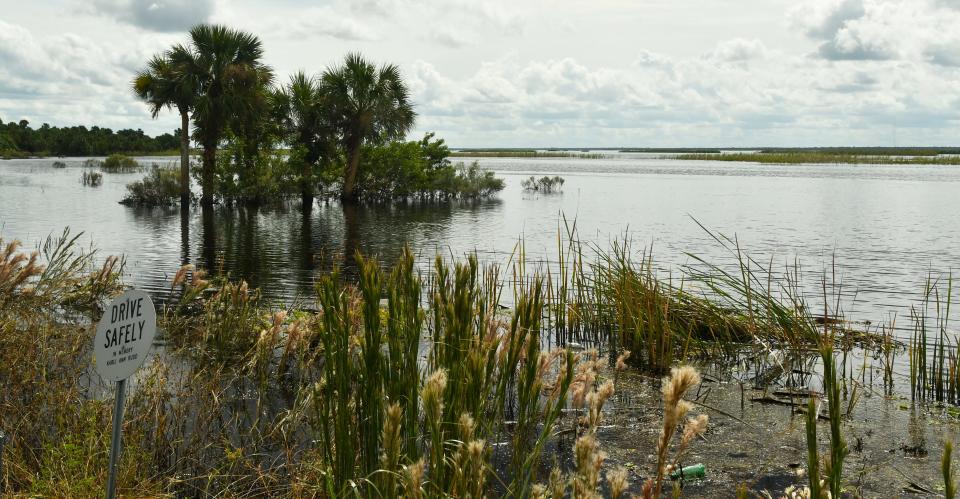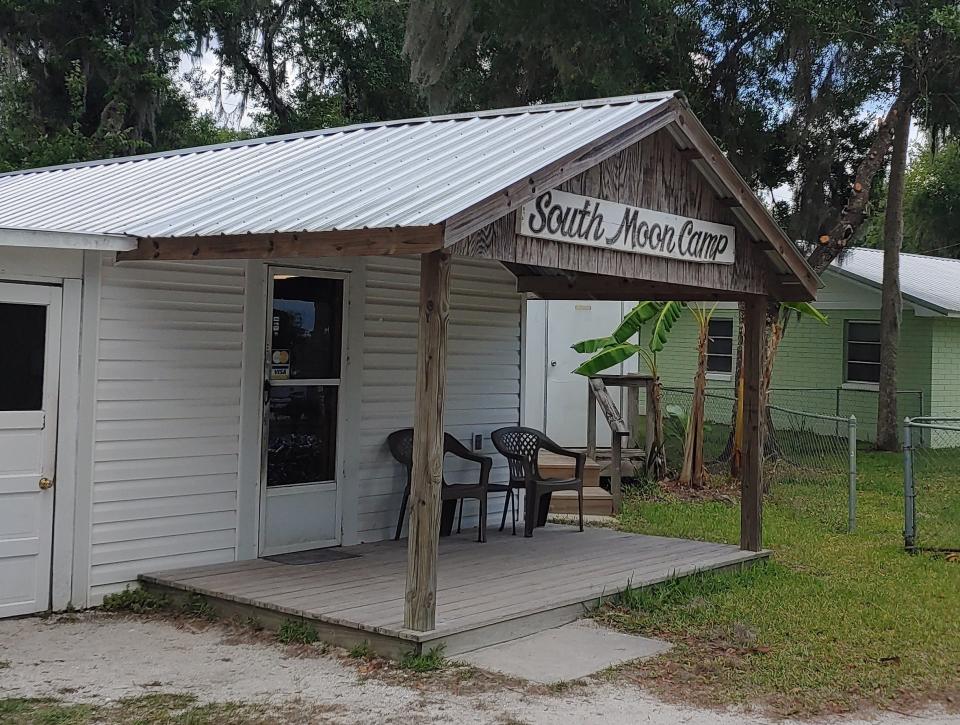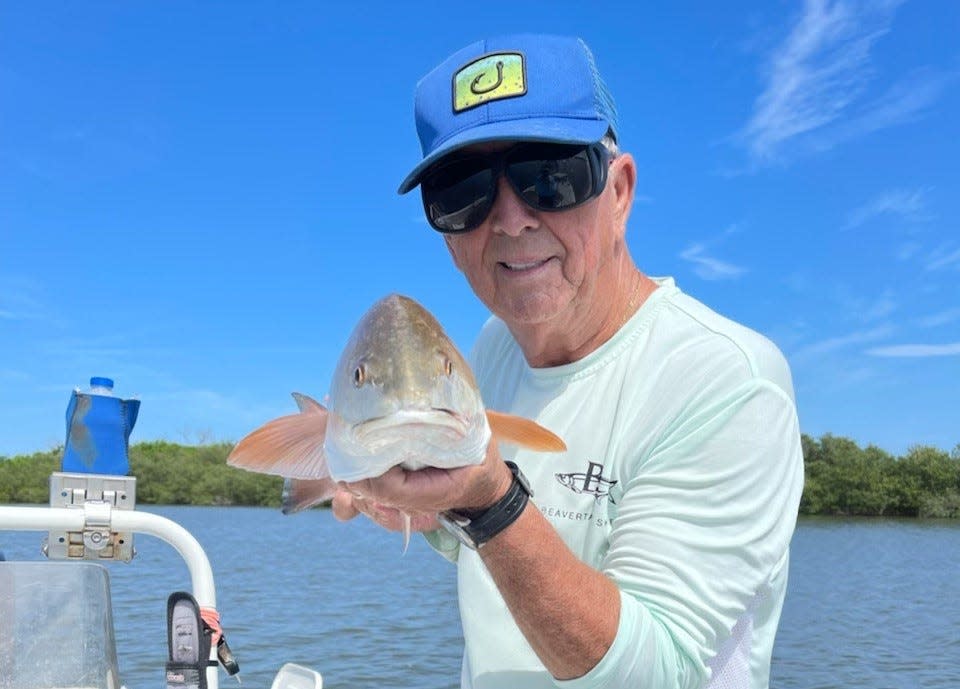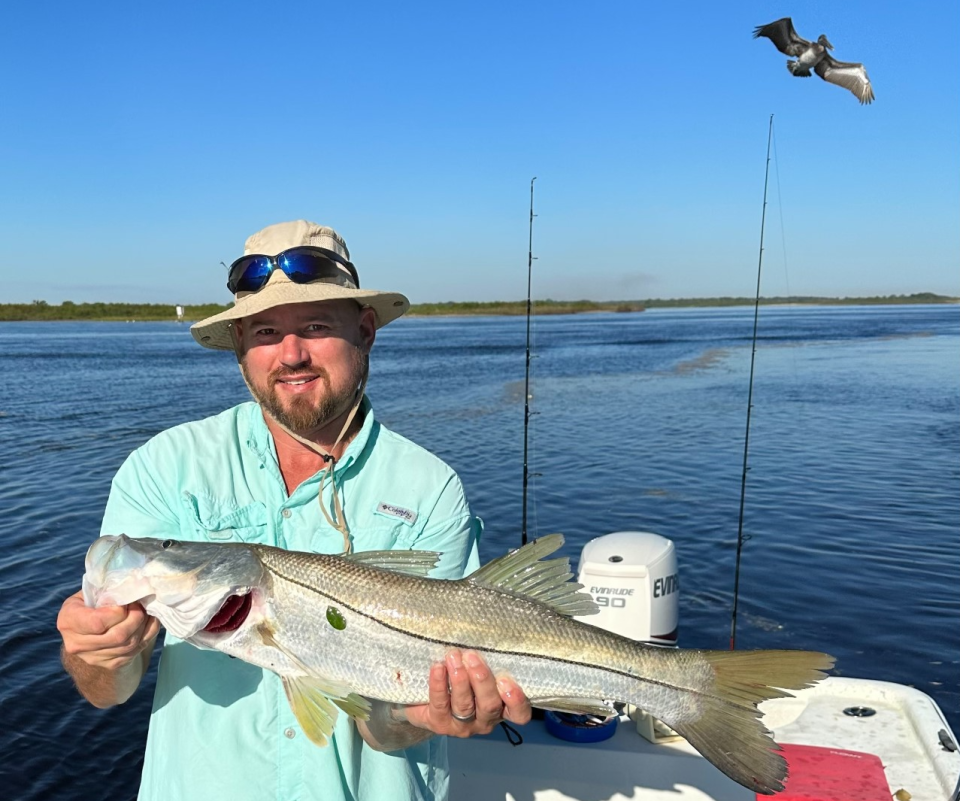Swollen St. Johns is an unwelcomed parting gift from Hurricane Ian | FISHING REPORT
Good news is, the phone lines are operating again at Kerry McPherson’s South Moon Fish Camp. Bad news is, like so many folks in Astor, Kerry is still sloshing about.
“Nothing going on, still pretty bad over here,” he says. “We’ll just wait for the water to go down, and then we’ll get busy. Nothing you can do 'til then.”
Ian, first as a hurricane and later as tropical storm, wasn’t just deadly and costly, but ongoing. Its lingering devastation is obvious to anyone near the St. Johns River.
“I heard someone say it might be Thanksgiving before all the water is gone,” Kerry says. “Back during Hurricane Irma, in ’17, it took about six weeks for the water to get out of here. We got more water this time, so I’m thinking six to eight weeks — with good weather, no setbacks.”
DON'T SINK! So you bought a boat, now what? You might want to pay attention to this
FISHBITES: The idea for Fishbites began with young Billy Carr in New Smyrna Beach

For the most part, the St. Johns is shut down to boaters. With water levels swelling into riverside neighborhoods, the last thing those folks need is someone’s wake sending dirty water into the house.
South Moon sits hard against the river, just north of Astor’s State Road 40 bridge. The bait shop and several efficiencies are closed until Lord knows when.
“You have to get about a quarter-mile away from here to find dry ground,” Kerry says. “The water has dropped about six inches from where it was. It’ll go down an inch, then raise an inch. We’re just maintaining right now.
“It’s got a good flow to it; it’s flowing pretty hard. But there’s still a whole lot of water down south that has to come through here.”

Now, a sliver of decent news. Remember how we said St. Johns fishing is shut down for the most part?
“We’re open and our boat ramps are open,” says Capt. Bryn Adams from her family’s Highland Park Fish Camp in DeLand.
Highland Park is surrounded by the Lake Woodruff National Wildlife Refuge, 23,000 acres of unspoiled Florida goodness. No homes, no businesses, and therefore nothing to be damaged by a boat’s wake.
Cabins and campsites, boat rentals, gas and live bait — just about everything at Highland Park is back in business.
Except the phone lines are still down. Talk about your ironies. Upriver at South Moon, the phone is about the only thing in operation.

Pay attention in the ICW, Ian changed some things
Unlike the St. Johns, the intracoastal is very fishable right now. In fact . . .
“Fishing has been on fire,” says one local angler.
But if you’re fishing from a boat, you might want to pay some extra attention these days.
“Definitely still seeing some debris in the channel,” says Capt. Charlie Beardsley, a longtime member of NSB’s Coast Guard Auxiliary. “We’ve also seen a big change in sandbar locations and shape. What was safe to pass by or pass through has shifted and we’ve seen an increase in groundings.”
A few big sandbars in the Ponce Inlet area, including the popular Disappearing Island, have been reconfigured, he says.
"The areas around them have either washed out or built up, changing the actual width and depth of the island and channels around it."
Halifax/Indian River: Snook, reds and more
Capt. Jeff Patterson (Pole Dancer charter) has been avoiding the choppy Ponce Inlet area, one of his favorite spots, and spending most of his time in the Ormond Beach area. And enjoying it, by the way. A hungry population of reds, snook and trout will lift the spirits.
“The water level has gone down, finally, but it’s still a little high,” he says. “That makes it tough to catch bait, even though the mullet are all over the place.”

He’s been seeing large tarpon around the bridges and in the Tomoka Basin, along with flounder around oyster bars, which triggers this reminder: Flounder go off-limits for six weeks beginning Saturday. From Oct. 15 to Nov. 30 they’re catch-and-release.
Ike Leary says the crabbing has been very good off the pier behind his Granada Pier shop. He’s also still watching people catch snook and black drum.
Ike’s fishing contest for kids last Saturday included 34 youngsters. “It was great. Gave away great prizes and 64 hot dogs,” says Ike, who always has dogs on the rollers.
Craig Patterson is surrounded by fishing opportunities at his shop on the Port Orange causeway (Donald’s Bait & Tackle), and he’s hearing plenty of positive chatter. Shrimp and baitfish are luring snook and reds, while a hunk of blue crab is still the meal of choice for black drum.
Sheepshead are getting busy around the bridge and relief bridge. Fiddler crabs are plentiful and the favored bait.
Surf: Snowbird pompano starting to drift this way
If you can get your gear to the beach, Craig says the pompano are starting to filter southward in the surf.
“With the absence of sandfleas, many anglers are catching them on knuckled blue crab, salted clam and fresh shrimp,” he says.
Also, if you’re a surf fisherman and hit the beach at low tide, put on your topography cap and study the troughs that will be underwater in several hours. Ian did some rearranging of furniture in some places, so there are now troughs where there were none . . . and vice versa.
Flagler County
With November approaching, bigger redfish will start flashing their tails in area waters. Also, however, huge schools of smaller fish.
“This can produce some of the highest catch numbers of the year,” says Capt. Mike Vickers (Hammock Beach Bait & Tackle). “If you’re not willing to move, you’ll catch a boatload of small fish and eat pizza or fried chicken for dinner. So if you start catching small fish, move on.”
With Ian’s influx of water, many big fish find themselves wandering into new territories, places once too shallow — or maybe even altogether dry.
“It’s pushed the fish to the back of creeks, flats, and canals,” Capt. Mike says. “It has also spread them out, so for best results get in the weeds and the woods and fish your way back out to more open water.”
Did someone mention pompano? Capt. Mike says an angler weighed a 3½-pound pomp this past Saturday, caught near the Matanzas Inlet, where huge tarpon (“over 100 pounds," he says) and over-slot snook are being seen.
The beaches are still a rough go, but good news is brewing.
“We’ve been getting reports of good pompano numbers just to the north of us in St. Johns and Jacksonville, along with big reds scattered in the surf,” Capt. Mike says.
Halifax Sport Fishing Club
Next Thursday (Oct. 20) at the HSFC in Port Orange, you can learn how to build your own custom fishing rod.
Guest speaker at the monthly club meeting is Todd Vivan, from Oviedo’s Mudhole Tackle, who’ll show you how it’s done.
More info: HSFC.com.
Hook, Line & Clicker: Send us your fish pics
We want to see your most recent catch. Email your fish photos to ken.willis@news-jrnl.com.
Please include first and last name of angler(s), as well as type of fish (we're occasionally stumped). All are included with our online fishing report, and some occasionally make the print edition.
Do I need a fishing license?
You can find all the license info, including exemptions, on Florida's Fish and Wildlife Commission website: MyFWC.com. But the basics are:
No: If you're 65 or older, 15 or younger, you don't need a license.
No: If you're fishing with a licensed guide or charter boat, both of which purchase commercial licenses that cover their customers.
Yes: Most everyone else, including visitors from other states.
Yes: Even if you're a shore-based angler (shoreline, dock, pier, bridge, etc.). However: The shore-based license is free . . . But: You still need to register for that free license.
Where do I get a license, and what does it cost?
Many bait shops sell licenses, as do the bigger retailers (Bass, Dick's, Walmart, etc.).
Florida's FWC uses a third-party site for buying or renewing fishing licenses: GoOutdoorsFlorida.com.
The cost: $17 for an annual license.
Don't forget: Whether you're fishing fresh or saltwater, you need the specific license. Freshwater and saltwater licenses are both $17 annually.
I'm here on vacation, do I need a fishing license?
Yes you do, and they're also available at GoOutdoorsFlorida.com or certain bait shops and big retailers.
Cost: $17 for three days, $30 for seven days, $47 for a year.
Also: Non-residents need to purchase that license even if they're just fishing from shoreline or shore-based structures. (Florida residents need that license, too, but they're free.)
This article originally appeared on The Daytona Beach News-Journal: Ian leaves St. Johns a swollen mess, but you can fish at Highland Park

